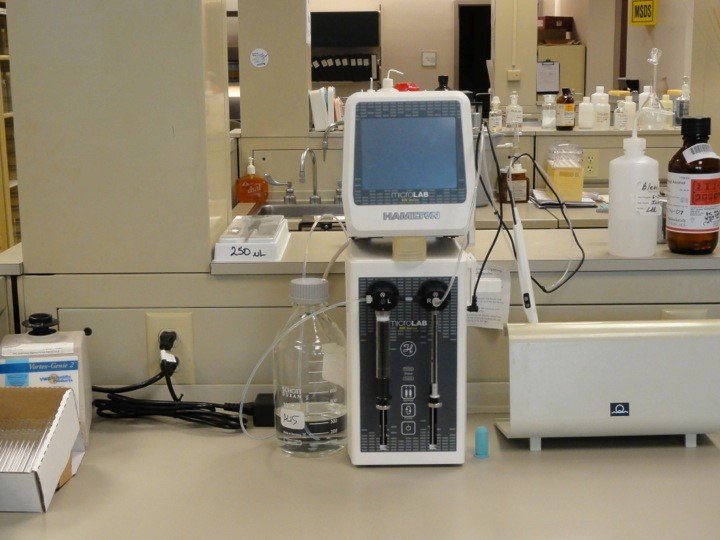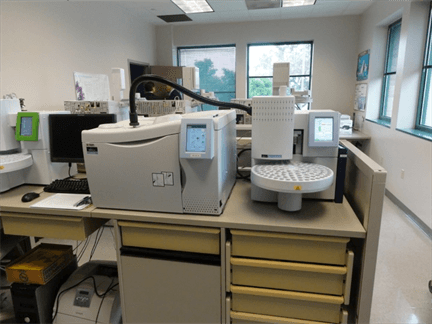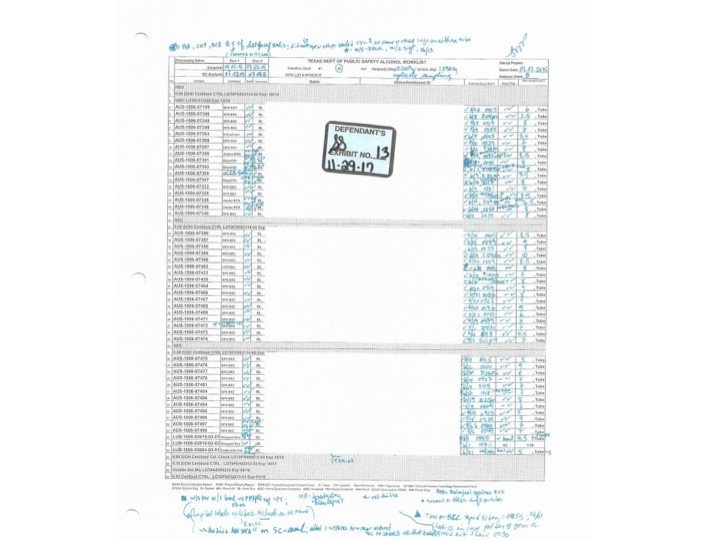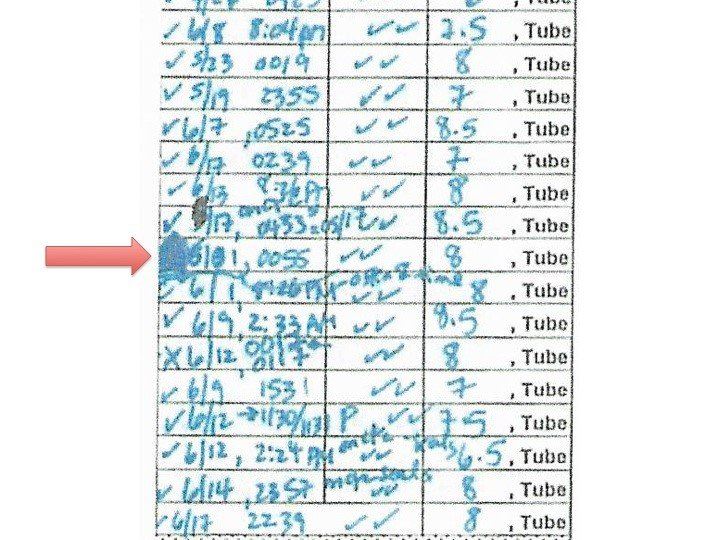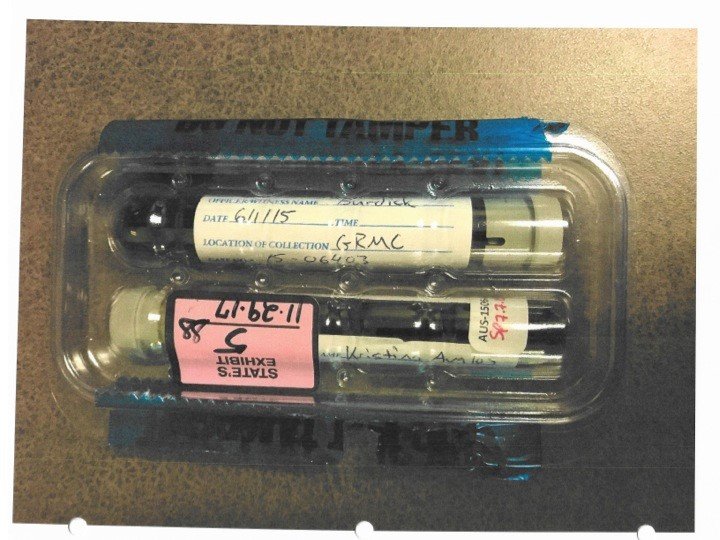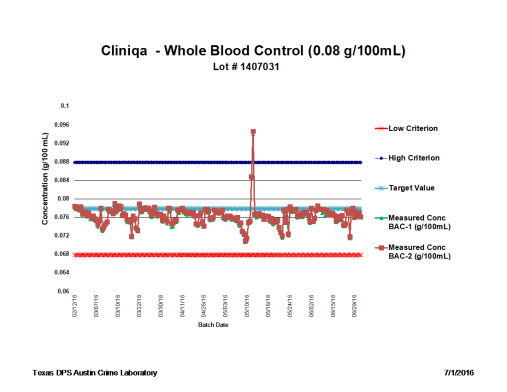So many States in this country are using blood test results in DUI/DWI cases that the Supreme Court had to lay down some rules.
Number One:
A blood draw is a search, and the police are going to need a search warrant to do it. Missouri v. McNeely (2013)
Number Two:
The person who actually tests the blood in the laboratory has to come to court to answer questions like “what are your education and laboratory qualifications?” and “what exactly did you do when you tested this blood?” Bullcoming v. New Mexico (2011)
EXACTLY!!
The accepted machinery for this process consists, generally, of these two things:
A pipette to measure the blood into a testing vial:
Others may be used from different manufacturers, but this one is a good example.
Next, and equally if not more important, is the chromatograph:
Again, others may be used from different manufacturers, but this one is a good example.
The equipment sounds all scientific and supercharged, but as with any piece of machinery, its results are only as good as the person who uses it. Sure, it runs automatically, but have you ever heard the word “recall?” General Motors, Toyota and even Tesla have recalls all the time. They are published in the news, and you will get a letter in the mail. Why? Because their automated process made a mistake along the line (or maybe a person?).
What possible mistake can the State Forensic Toxicology Laboratory make? I mean these organizations have been around for a long time. They are part of our government and law enforcement programs. They hire qualified experts to get in there and ferret out crime from the crime scene so we can put these guys where they belong!
Well sometimes these perceptions prevent people from seeing the truth about laboratory testing. That’s why the Supreme Court has made these decisions – so that defense lawyers will take a good look at this stuff before they tell their guy to plead guilty. You have read about laboratories being exposed for problems. For example, in 2016 in Austin, Texas the Austin Police Department DNA lab was shut down for possible contamination in 4,000 samples. As a matter of fact, just Google “testing laboratories shut down,” and you will see examples of MANY testing laboratories in the U.S. which have had to shut down over competency and accuracy issues.
People want to have faith in their State testing and police laboratories, and for the most part, their confidence is justified. However, the problem with laboratory testing is that it is automated. Several people, as many as 50 persons, may all be tested at the same time : all day long and five days a week. There is pressure on the lab to get results out in order to meet deadlines set by courts or law enforcement. Lab testing involves detailed, repetitive bench work. A big state lab may test as many as 750 persons’ blood a week for an alcohol concentration, and that doesn’t include dna testing or drug testing both of which take different equipment and equally tedious procedures. These machines break down. They malfunction. The analysts make mistakes. We all understand that, but what happens then? What if there is a problem? We all know there will be problems. That’s why we have recalls ! Because they don’t always find the mistakes before the process has been completed, and the product is sent out to be used by the public.
“Come on! These big State labs – they check their work and find these problems before they send it out! It’s all taken care of, right?” Well, maybe not. For example:
These are bench notes from a “batch” of testing vials during their preparation. Each line represents a person’s testing vial. (Some lines are for calibrators and controls, but we can talk about that later.)
The date and time of the blood tube containing the defendant’s blood draw was clearly written on the blood tube, and the bench notes indicate which line that blood was assigned to. The arrow, of course, shows the line that defendant’s blood was assigned to. This is the defendant’s blood tube:
Did the blood get pipetted into the correct testing vial, Mr. Juror? I’m just sayin’ … that sometimes things happen that aren’t supposed to happen. When you see things like this, it makes you wonder how many other people were directly affected by this error?
The problem is that some kinds of errors relate to part of or even the whole “batch” of persons. Sequencing errors can occur so that a group of individuals’ testing vials are misplaced in the sequence. Because the testing is automated, the software and the machine don’t know the vials are out of order. The test results can be assigned to the wrong persons in the batch. Controls and calibrators can test out of range and the entire batch can be invalid… wait! How often does something like that happen, really?
“Controls” are put in vials and tested with the batch of persons so the lab can say:
“We bought this control with a .08 alcohol concentration, and we tested it, and we know that it is “.08.” Its “www.nist.gov” approved! We tested a batch of persons with it and other similar controls of different alcohol concentrations that we know are accurate. Therefore, when we tested these persons’ blood vials at the same time with this control, our control tested correctly at .08. Therefore, we know that the persons’ alcohol concentrations tested in the batch are also correct.”
“Controls” are commercial substances that can be purchased from companies who make them, and the companies certify that the controls are made in compliance with the standards set out by the National Institute of Standards and Technology (www.nist.gov).
Each square on this “control plot” represents the accuracy of the lab’s measurements of this .08 blood control over several months during actual testing of peoples’ blood. Each square (batch) represents 50 peoples’ blood tests. Do you notice anything unusual in this chart? Does anything seem to STAND OUT as unusual in it? I’m thinking “recall.” What do you think? You say, “Hold on, Einstein! There has to be a good explanation for this. If this was such a big deal, then the lab cleared it up and told everyone…and, hey, it could have been charted wrong, right?”
Wrong! In a DUI/DWI case this .08 is the magic number. So what went wrong for those 50 people? Was the NIST control wrong? Or, was it the testing process itself that NIST is trying to “control” that went wrong? Well, take a look. This high (“out of control”) reading didn’t just happen at once. If you look carefully, there are other squares leading to it that seem to be headed in a direction that is different from the regular cadence of control measurements. This problem happened over a period of time during which these automated processes were ongoing.
Was the control going bad? Well, no, because the labs buy them in packages called “lots” of sealed glass vials. If one vial goes bad and starts testing too low (because the alcohol escapes from the vial over time), they can open another one. It appears from the cadence of results on the chart that the analysts were doing exactly that: changing vials that were going bad after periods of time. That’s why we plot these results: so we know we are operating our testing process in a range that is “in control.” No, Mr. Juror, something went wrong with the testing process. It went wrong for a lot of people too because when a lab’s controls test out of range, the whole batch needs to be retested or recalled. “Well, they told everybody and corrected it, so everything is ok now. Right?”
I am sorry to say that we do not know, and it is quite possible that nothing was done to correct the problem. In fact, during actual legal proceedings the laboratory denied that these charts even existed! Only when the analysts were on the witness stand, under oath, did they admit that the charts existed. Later when the lab was asked to produce the batch lists on this chart to show that the wrong batch was re-tested and corrected, your State lab refused to produce the information – even through a supervising prosecutor who was willing to ask. Moreover, this problem was not discovered until months after the chart was made and the criminal litigation was probably concluded for those 50 or more people.
What happens when Ford, Toyota, General Motor Companies do something like this after it has affected people’s lives? Remember the Pinto? Why do we have seat restraints in cars? Why is there special glass in car windows? It’s so people don’t get burned, ejected and shredded in auto accidents! Are we going to have these same recall protections for people accused of crimes involving alcohol? I mean, in time for the trial so that we don’t need to have some national news special that makes everyone aware after years of problems are discovered. By the way, Mr. Juror, DWI defense lawyers don’t make millions of dollars exposing this kind of problem. What actually happens is that their clients get fair trials.


